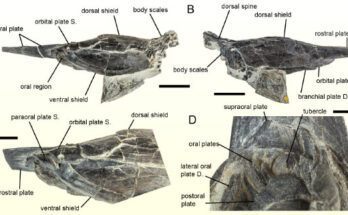The third issue is the likelihood of a dull planet producing the noticed sign—an equally severe problem, researchers now understand, that’s tousled in the issue of unconceived abiotic options.
“That’s the likelihood that we argue you possibly can’t fill in responsibly,” Vickers mentioned. “It may nearly vary from something from zero to 1.”
Take into account the case of K2-18 b, a “mini-Neptune” that’s intermediate in dimension between Earth and Neptune. In 2023, JWST knowledge revealed a statistically weak signal of dimethyl sulfide (DMS) in its environment. On Earth, DMS is produced by marine organisms. The researchers who tentatively detected it on K2-18 b interpreted the opposite gases found in its sky to imply that the planet is a “water world” with a liveable floor ocean, supporting their idea that the DMS there comes from marine life. However different scientists interpret the identical observations as proof of an inhospitable, gaseous planetary composition extra like Neptune’s.
Unconceived options have already pressured astrobiologists a number of instances to revise their concepts about what makes an excellent biosignature. When phosphine was detected on Venus, scientists didn’t know of any methods it may very well be produced on a dull rocky world. Since then, they’ve recognized a number of possible abiotic sources of the fuel. One situation is that volcanoes launch chemical compounds known as phosphides, which may react with sulfur dioxide in Venus’ environment to type phosphine—a believable clarification provided that scientists have discovered proof of energetic volcanism on our twin planet. Likewise, oxygen was thought-about a biosignature fuel till the 2010s, when researchers together with Victoria Meadows on the NASA Astrobiology Institute’s Digital Planetary Laboratory started to search out ways in which rocky planets may accumulate oxygen with no biosphere. For instance, oxygen can type from sulfur dioxide, which abounds on worlds as various as Venus and Europa.
At present, astrobiologists have largely deserted the concept that a single fuel may very well be a biosignature. As a substitute, they deal with figuring out “ensembles,” or units of gases that couldn’t coexist with out life. If something will be known as at the moment’s gold-standard biosignature, it’s the mix of oxygen and methane. Methane quickly degrades in oxygen-rich atmospheres. On Earth, the 2 gases solely coexist as a result of the biosphere constantly replenishes them.
To this point, scientists haven’t managed to give you an abiotic clarification for oxygen-methane biosignatures. However Vickers, Smith and Mathis doubt that this explicit pair—or maybe any mixture of gases—will ever be convincing. “There’s no method to make certain that what we’re taking a look at is definitely a consequence of life, versus a consequence of some unknown geochemical course of,” Smith mentioned.
“JWST isn’t a life detector. It’s a telescope that may inform us what gases are within the environment of a planet,” Mathis mentioned.
Sarah Rugheimer, an astrobiologist at York College who research exoplanet atmospheres, is extra sanguine. She’s actively trying into alternate abiotic explanations for ensemble biosignatures like oxygen and methane. Nonetheless, she says, “I’d be popping open a bottle of champagne—very costly champagne—if we noticed oxygen, methane, and water, and CO2” on an exoplanet.



